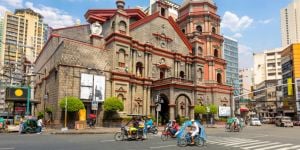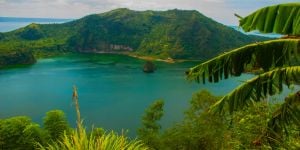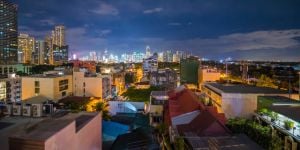Tankless or tank water heater?
Subscribe to the topic
Post new topic
Trying to decide a hot water system on a new home build. I see many homes have tankless point of use heaters, but you would need one for every hot water faucet, right? There are water boiler tanks electric and gas for whole house systems, which are inefficient. Also there is a tankless whole house system, which I am leaning towards but I really dont have a clue for Philippines since my experience is only with US
I would definitely not use water boiler tank in the Philippines. Tankless whole house system has become popular here in the US, but during the winter I think it can't keep up especially doing washing machine laundry and someone taking a shower at the same time. It is so warm in the Philippines, do you really need whole house system? Mine, I only opted for the shower water heater, although it is condo in Manila. I thought about adding a water heater in the kitchen faucet, but my caretaker said it is really not needed.
We have a tankless unit installed for the master bath shower on the house we had built 2 years ago, but we never us it. It was installed under the sink and piped so that water temperature is adjusted with the diverter valve like a normal shower. It can be easily connected to the bathroom sink if we wanted, but we don't need it. Nice to have it under the sink instead of in the shower but it could be removed and we would not miss it. Hot water is only used for coffee.
My wife washed clothes and dishes with cold water in the US so we had no reason to install additional water heaters here. We bought a fancy new Samsung front loading washing machine, it even has WiFi, but it doesn't have a hot water connection. We also have a fancy new top loading washing machine, both machines bought in the Philippines, and neither one has a hot water connection. There is only one hose with each machine so even if you had hot water in the laundry area it may be difficult finding a washing machine with a hot water connection.
The contractor did install and 30 amp outlet under the kitchen sink so it would be simple to install a heater. You could ask the contractor to do that much in case you decided hot water was needed in the kitchen. Under the sink plumbing for a heater is simple, installing additional electric service in a masonry house is not so simple.
It's common here to do without hot water, as previously mentioned. We have it in the shower, which takes the edge off. Washing machine, a nice top load LG, is cold water only. The only place I miss it is the kitchen sink and Im planning to have one installed there in the new house we built. I prefer washing and rinsing dishes with hot water.
Ah yes . . .Thankless Tankless water heater.
When I moved to the Philippines I was quite surprised that the whole house did not have a water heater (my USA upbringing)
How much hot/warm water considerations on where you live and is your electric budget.
In our house we have three water heaters in our three showers, three bathrooms on three floors.
The bathroom on the first floor is never used for showers. With three bedrooms on the second floor, the water heater stopped working and nobody complained.
On cold days (seldom in Manila) family members will sneak a shower on the third floor. My grandson, 5 years old, does shower on the third floor, which also has a master bedroom & kitchen.
Like everything else in the Philippines, Filipinos are custom to certain things that westerners are not.
@pnwcyclist I bought an On Demand Hot Water Kitchen Faucet on Lazada. Second one now as first one Failed - Guess the inards got too hot and burned up. Just Plug into an outlet - Max about 3,000 Watts. PHP 1,500 Delivered. I like using Hot Water for cleaning dishes, pots & pans. Guess I am a spoiled Gringo or Kana as they say here.
@talamban They generally are rated 3KW for a shower and 7KW for a distributed system which handles the shower, jacuzzi bath and sinks. Of course, for that you need separate cold and hot water plumbing so distributed is usually only practical for new building projects. We put in a 7KW distributed system (with ground fault protection...don't forget that! You have 220 VAC separated from your water and electrocution by sometimes very cheap Chinese single fault insulation). There are no product safety laws here. When the electrician sees the 7KW rating, which is huge, he will size the wire and circuit breaker rating accordingly, possibly increasing costs (along with ground fault). I have seen a few heaters with built in ground fault but in my opinion they are not always that reliable after looking at them inside. We protect our single and distributed heaters with external US or EU agency approved GCFIs.
We have three tankless heaters. One in the kitchen so that we can wash and rinse dishes with hot water. And two (one in each bathroom shower) so that we can take warm/hot showers.
We had no need for one for the washing machines as cold water washing gets our clothes perfectly clean. We just had to cap off the hot water inlet on the washer so cold water wouldn't leak out.
We haven't seen a need for hot water at any of the other sinks.
I would be interested to hear what flow rate (preferably in litres per minute) you get with tankless heaters in the Philippines, specifically for showers.
Here in the UK we have tankless heaters that also heat the property via radiators - we call them combi boilers. However with hard water (which applies to most areas of the UK) they tend to scale up. In my house I have a tank in the loft which is heated by the boiler but the tank (pressurised) runs off mains water pressure so I get about 12 litres pm coming through my shower head (faucet). I find this an ideal flow of water as anything more powerful is unnecessary and wasteful. Moreover if another tap (faucet) is turned on in the house while showering the flow of water is reduced but the cold/hot mix remains proportionate so you don't get scolded
@Moon Dog Thanks, makes sense, cold water laundry is ok, only use hot for sheets really, maybe not needed then. If the water supply is from your water tank outside, then I assume is not going to be cold. Same for the shower, I assume is decently warm?
@Enzyte Bob Haha, I'm looking at building a bungalow for retirement so all same floor but would likely therefore go for units in the bathroom then. Just wondering where all your sinks which I assume have a hot and cold faucet, where the hot is plumbed to.
@danfinn Nice idea, was thinking of a whole house system. Agreed on the ground fault GFI and will make sure that is in the design along with 3 pin outlets!
@Lotus Eater Here, you need a minimum flow rate to make the heaters work. In Dumaguete, a distributed system my not even work unless you install your own pressurized tank and pump fed by the municipality.
@Lotus Eater Here, you need a minimum flow rate to make the heaters work. In Dumaguete, a distributed system my not even work unless you install your own pressurized tank and pump fed by the municipality.
-@danfinn
Yes indeed that was at the back of my mind. Water pressure here varies within cities and towns. I had Wessex Water, my local supplier, come out before I upgraded my system a couple of years back to test my pressure. I have 3.5 Bar pressure at the stop cock in my garage which was sufficient.
I suspect that the water pressures in the Philippines are considerably less than that. You mention a pump. Thats the way to go if you don't have mains pressure. Non pressure tank connected to a pump that feeds the shower.
I had this system before but the pump was noisy, prone to leakages, and there is a 'delay' before kicking in due to the reed switch.
@Filamretire We don't have a tank but we do have a deep well and diesel generator so a raised tank isn't necessary since there is virtually no situation where we wouldn't have water. We use municipal water most of the time and the municipal water is warmer on sunny days.
The problem with the deep well is the high iron content. We didn't know it until the pool was finished and I filled it with well water. When I added shock it turned brown like weak coffee. I had to pump out the pool and fill it with municipal water, problem solved. Before that my wife was complaining that the white laundry didn't look white enough. That was when we were using the deep well water exclusively. Adding bleach was actually darkening the fabric because it was oxidizing the iron.
I have the municipal water plumbed into the water supply with a check valve so when the pressure drops, like during a brown out, the municipal water comes in automatically. I also have a 1" ball valve on the outlet of the deep well pressure tank so when I open the ball valve it is all deep well water and when I close the ball valve it is all municipal water. It is almost always closed these days since municipal water is ridiculously cheap here in the province and better quality than our well water.
@danfinn Nice idea, was thinking of a whole house system. Agreed on the ground fault GFI and will make sure that is in the design along with 3 pin outlets!
-@Filamretire
The 3 pin grounded outlets is a good idea and we did that too with ground rods. Safety is not a big priority here although they do usually require elec coop members to go through a 4 hour seminar.
@Lotus Eater
I had this system before but the pump was noisy, prone to leakages, and there is a 'delay' before kicking in due to the reed switch.
-@Lotus Eater
My system consists of a large storage tank fed by municipal water. That feeds a smaller pressure tank with 1 hp pump which is basically water under the pressure that you set. So the pressurized water is always in the plumbing and available on demand.
@Enzyte Bob Haha, I'm looking at building a bungalow for retirement so all same floor but would likely therefore go for units in the bathroom then. Just wondering where all your sinks which I assume have a hot and cold faucet, where the hot is plumbed to.
-@Filamretire
************************************************************
The only hot water we have is for the bathroom shower. So all the faucets have cold water. To shave I use the hot water from the shower and fill a pot with hot water and put it in the sink. The shower head can be handheld so no problems with aim into the pot.
You can get use to washing your hands in cold water, but with normal plumbing the first few seconds the water in the system is room temperature before it turns cold. We have a live in housekeeper who does the dishes.
One thing not mention is the toilet/loo. As you get older it seems the toilet/loo gets shorter. Maybe it's shorter in the Philippines because they are shorter people? I don't know the proper term so I'll just call it a High Rise toilet/loo, which we have, it makes life a lot easier.
Also in the Philippines they have a version of a Bidet, that's one thing I'm not going to learn in my old age. I do it the old fashion way, toilet paper.
We installed GFCI outlets under the Bathroom sinks then used the Panasonic MULTIPOINT units so that the shower and sink are serviced by one unit. Then if you get a descent sized Washer/Dryer COMBI unit, it has its own built in water heater and all is good to go....The cheaper tankless units are supposed to be replaced every 3+ years etc but all depends on water purity so hoping we can get quite a bit more with the Pani’s
@Enzyte Bob I had taller toilets in the States in all of my bathrooms, and I am spoiled by them. They are called either "Comfort Height" or ADA (American Disabilities Act) Toilet Height. ADA-compliant chair height is a minimum of 17 inches and a maximum of 19 inches from the finished floor to the top of the toilet seat. Standard height toilets are typically 14 to 15 inches in height. I am leasing but plan to pay for a new higher toilet not only for the height, but also mine doesn't flush worth a S**t. Not easy to find in Cebu.
@danfinn The Kitchen Faucets with On Demand System does not have two inlets. Only One and Hot water is turn handle to the left, and cold is turn to the right. There is a Plug at the end of a short, maybe one meter cord that just plugs into the wall outlet. I have not tripped any circuit breakers yet. Caution Though, I suggest that after using the Hot Water Function - up to about 50 - 55 C Max, that you did run the Cold Water for a bit to cool down the coil. I think that will extend the life of the faucet.
@Filamretire We built a 4-BR house 3 years ago and opted for tankless water heaters for the showers and bathtub (!!!). But the water pressure in our development is so bad that we also put a non-heated tank on the roof. That water can be pretty warm on hot sunny days.
We later put a water filter in front of the tank (we were getting a lot of debris in the tank) and haven't needed to clean the tank in a couple of years. I do clean the filter every month.
We also have a refrigerator/freezer with a filter built-in for drinking water and ice cubes (I really don't trust the water refilling stations and avoid using plastic bottles). Our washing machine makes its own hot water.
Good luck with the new house!
@rcvining Thanks! Great advice, as are the other responses. I was thinking about adequate muni water supply also, will check with other residents of development. Maybe an external tank and pump if so. I also want to avoid plastic, will get a filter system for drinking also. We will be doing the shower heater as well.
Thanks on the house, can't ever seem to find a nice house in development with a garden that fits our needs, therefore will build. Wife doesnt want a baranguay house, although I mentioned it is much cheaper and larger lot sizes, but I understand the need for security and amenities etc
I got a solar unit and tank and mounted on roof. Works very well. Well pump pumps up to it about 30 feet.
also bought Toto toilets which Im convinced are the best.
Ive had several days of cloudy and although the water is not hot then, its warm enough. On sunny days about 0900 its very toasty. I spent about 40 K pesos to have it bought and installed.
i have an inline water heater for the shower. There should be enough water pressure coming into the heater for a decent shower, but not much water comes out of the shower head. Can anyone recommend a good brand of electric inline water heater? We've had this water heater for about 5+ years. Do you think it maybe too old and needs to be replaced?
@Filamretire
Leave the shower head in a bowl of vinegar- white wine vinegar if you’re posh - overnight. It’s probably full of limescale. Good as new afterwards.
FWIW . . . .
My experience with shower water heater, hot-cold water vs. water pressure.
About a year ago the water company was repairing pipes and we had lower water pressure. The third floor had a trickle of water from the shower of cold water.
Now I like a hot shower. . . very hot. Besides the setting the control of the temperature, you can also very the temperature by controlling the water flow, less flow the hotter the water.
You can reach the point where the water pressure is weak and the heater stops working. On our heater there is a light, when lit the unit is heating.
@Enzyte Bob Even my 10 year old twins prefer using the tall toilet in the master CR. Of course they are taller than their mother who is 5'4".
You could get an whole house electric inline water heater. I would just use one for a single shower only.
I'm not worried about washing dishes in cold water.
Chlorine Bleach Solution: Soak dishes for
at least one minute in a sanitizing solution made up
of 1 tablespoon of unscented chlorine bleach + 1
gallon of cool water (hot water stops bleach from
sanitizing).
Im planning to put a solar water tank with water solar panels on the roof
.
I recall as a former journeyman plumber I had to make a tiled raised box for a highline handicapped toilet to sit on for a basketball player who was very tall.
If one cannot find a standard highline handicapped toilet. Maybe build a base to raise up the standard Philippines toilets?
@DonRam Most people around here do not use bleach to wash dishes. Never even heard of that. They just use regular tap water and dish soap. No problems.
Just found out the tankless heater in the shower of our rental home, which is mounted directly to the wall, is not properly grounded.. the hard way, haha. I felt that tingle through the shower handle and metal hose. Did a little research and discovered it (a Panasonic) is only two wire which means there is no earth ground. Yikes. I will be having it disconnected.
In our other house I will be installing a solar hot water heater. Easy to do and practical with all the abundant sunlight and warm climate here. And solar thermal (hot water) is much less expensive than solar photovoltaic (electrical). Or at least it used to be
@pnwcyclist Right, the electrical code here does not require earth ground. If you felt a tingle, then something is wrong with the unit's insulation system and it needs to be replaced. It could get worse and turn into a full blown 220V mains shock which is deadly of course. We have a total of 4 hot water showers in oir 2 houses and for those, I had the electrician go to Polaris and install agency approved GCFIs (ground fault circuit interruptors). Then, if the product has leakage current that you can feel due to wet/moist insulation, all power to the unit will be disconnected...you do not need a ground, it senses the imbalance between line and neutral and shuts everything down. Of course, the shower unit still needs to be replaced because it will not work anymore but you will have perhaps saved a life. I believe the Phils elec code should require GCFIs in all locations where water is present including bathrooms, kitchens and outdoor receptacles (outdoor Christmas lights are a big potential exposure, especially with those cheao chinese plugs that sometimed fall apart after a few installations). I think the Europeans and Aussies call these "RCDs" (residual current devices) so they can be different than the Americans lol. However, you will not find these protectors around here very often but I follow US safety codes and on our new home additions I have the electrician install grounded outlets with a 10 foot ground rod. In the US we had to worry about 120V which can also kill but 240V will kill a person even faster.
Yes Dan, Australia, ELCB's are mandatory in any new home or selling an existing property has to meet the current standards. Your only dead once.
All our A/C,s and 2 bathrooms tankless water heaters are earthed to the rebar, mentioned this in another thread and give little credence to an earth line surrounded by concrete especially in the dry season.
Off topic but chatting to the electrician the other day I mentioned ELCB,s and RCD,s,,,,, no sir we don't have here.
Back on topic, we have 2 tankless heaters in the showers here but never bother or rarely, no hot water for the washing machine, not for 40 plus years and no hot water in the kitchen, again not needed, cool water works fine in a tropical country. Collect the oils and grease, wipe out the pan with Kitchen towel, put that in the compost and wash your dishes in cold water, works for us.
We shipped a 70 gallon water heater (solar, combustion and electric) from Australia and sat in the storage for 4 years, thinking of selling that to a scrap merchant, lot's of copper. An Au 1500 buck unit I will be lucky to get 500 pesos for. Are little and happy with cold water.
OMO.
Cheers, Steve.
Thanks guys. The single-point unit in question supposedly has a built-in ELB (their name) that I construe to mean ELCB and is advertised to detect current leakage and interrupt the circuit. But my understanding is these require an earth ground to work properly in the first place. And this unit from what I have seen on YouTube is two wire only. Panasonic Model DH-3PL1.
The wiring is in the wall and I have not removed it from the wall as this is in a home we rent. I did manually press the ELB to break the circuit and it seemed to stop the leakage/tingle, although I am a bit gun shy now, haha. As you can tell, I'm definitely not an electrician and I have few tools/no multimeter here anyway.
@pnwcyclist If the ELB had worked properly, you would have felt no electricity at all; it would have removed power before you could feel it. But it didn't, maybe because there was no ground. But anyway it is best for people to consult a good electrician on these issues. I am an electrical engineer so I understand them but I have inly met one electrician here that understands electrical safety...and people get electrocuted a lot in these country.
It would be best to wire the tankless water heater according to the instructions it came with. We have a term for it: RTFM. Although not grounding the unit may not prevent the unit from heating water, it is a serious safety concern. GFCI does not give anyone a pass on other safety measures. I have seen people grounding the tankless unit to the faucet pipe, not the PVC type. The iron pipe. It could work but . . . . You need to know much contact the pipes have with earth. Not encapsulated.
@Jackson4 Agree but gfci is really good and will shut down the power as soon as a 5ma delta is sensed between hot and neutral. Other safety measures such as grounding should be employed for two fault protection but here in the Philippines, residences are not typically grounded with a 3rd wire. In the US both measures are taken plus the code requires that the heater itself be tested and approved by a recognized safety agency which makes them more expensive. That's just the way it is but this is a good addendum to a discussion of tankless heaters in the Phils where safety requirements are lax and most oeople don't reaiize the possible safety hazards when combining water with 220vac.
I've only installed 2 tankless water heaters so I'm no expert but both required the installer to supply the electrical cable. I saw a ground screw but I had nothing to ground it to so it is connected with 2 wires like practically everything else. The heater in my master bath is under the sink and connected to the shower via PP-R plastic pipe so it's safer than most.
It's interesting that our Samsung microwave and washing machine came with 3 prong plugs but also a separate green ground wire. It is probably for situations where an adapter is used to convert to 2 prong wall outlets but grounding is still an option.
Articles to help you in your expat project in the Philippines
 Lifestyle in the Philippines
Lifestyle in the PhilippinesAbout to move to the Philippines? Wondering how you're going to adapt to your new environment and lifestyle? ...
 Getting married in the Philippines
Getting married in the PhilippinesGetting married in the Philippines provides a backdrop of immense beauty through stunning beaches, tropical ...
 Dating in the Philippines
Dating in the PhilippinesThe beauty of the Philippines, with its dramatic modern and old Spanish architecture, plus the golden sands and ...
 Obtaining a Philippines driving licence
Obtaining a Philippines driving licenceWhether you are converting your existing foreign driving license or applying as a first-timer for a Philippines ...
 Leisure activities in the Philippines
Leisure activities in the PhilippinesConsisting of more than 7,000 islands, the Philippines is a real treasure that you can explore during your stay ...
 Choosing your neighbourhood in Manila
Choosing your neighbourhood in ManilaChoosing a neighborhood is one of the most critical decisions that expats need to make when moving to Manila. Each ...
 Phones and Internet in the Philippines
Phones and Internet in the PhilippinesWhen moving to the Philippines, the first ‘essentials' is telecommunications; Getting a local sim card and ...
 Diversity and inclusion in the Philippines
Diversity and inclusion in the PhilippinesThe culture of the Philippines is very diverse. This is due to the large mix of different nations in this country, ...
Find more topics on the Philippines forum




